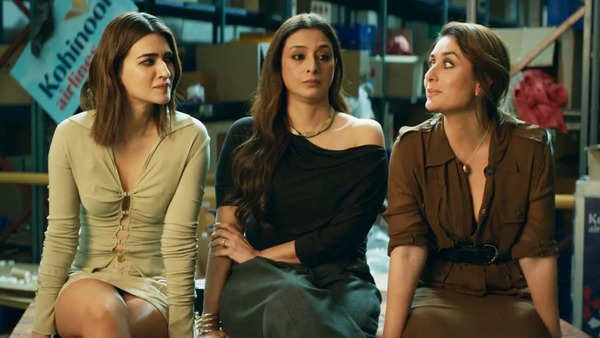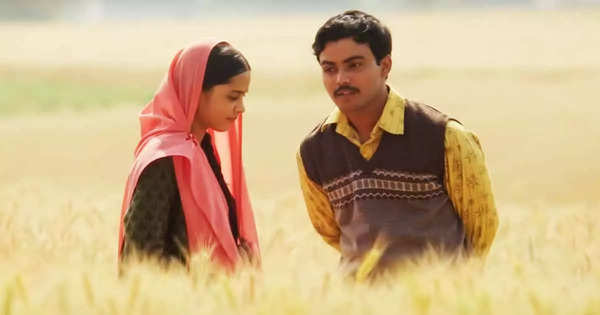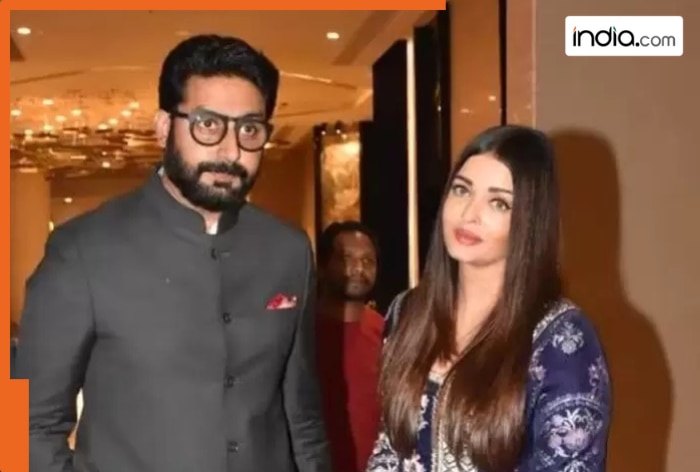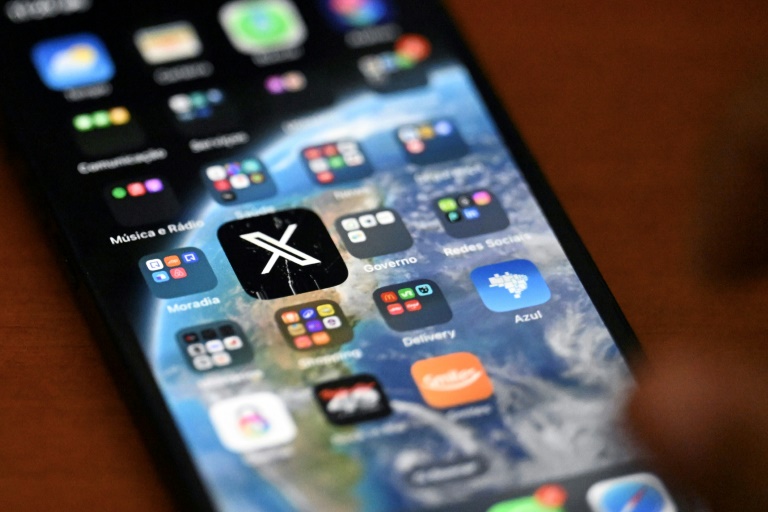From Kareena Kapoor Khan, Tabu, and Kriti Sanon teaming up in The Crew, to newcomers like Nitanshi Goyal and Pratibha Ranta shining in Laapataa Ladies, female actors are proving that they can carry a film just as well, if not better, than their male counterparts. Upcoming projects like Alia Bhatt’s Jigra, and Alpha and Kangana Ranaut’s Emergency, only add to the anticipation of more powerful, women-centric stories. This shift towards women-led narratives highlights a growing appetite for complex female characters and stories that go beyond traditional Bollywood stereotypes.
The Rise of Women-Centric Stories
For decades, Hindi cinema has predominantly portrayed women as love interests, supporting characters, or damsels in distress. While there were occasional exceptions, such as Mother India or Arth or Bandini or Sujata, mainstream films often relegated women to secondary roles. However, in recent years, a conscious effort has been made to create films that revolve around women.The trend was back in vogue for some time with Vidya Balan, as she delivered back to back powerful performances with Kahaani, Ishqiya , The Dirty Picture, Paa , No One Killed Jessica etc.
The Crew, a much-loved film starring Kareena, Tabu, and Kriti, stands as a perfect example of this change. With a story centered on three women navigating their careers and personal lives, the film explores themes of friendship, ambition, and resilience. Audiences are no longer content with seeing women on the sidelines—they want stories that celebrate their strengths, vulnerabilities, and complexities. Kareena’s latest film The Buckingham Murders also has her in the lead role and the film is holding steady at the box office.
Trade Expert Taran Adarsh states, “Films with women in the lead roles were always there and I’m not talking about only Mother India or Bandini or even Mugal-e-Azam would be incomplete without Anarkali but in the middle we had stopped making them . When the action took over in the 70s and 80s , everything took a back seat and actresses were used only for glamor and songs but beyond that they were underutilized.”
“ It’s not that we didn’t make women centric films lately but this year there have been many examples where we were leading the film and they have even performed well at the box office. But also after a point ,it shouldn’t matter if it is a hero or heroine oriented film, the story should connect, so we should work with leading actresses, women directors, women writers and in every department and in any case women do bring in a fresh perspective to a lot of things. My favorite film of the year is Laapata Ladies , in fact I was telling the makers that they should re-release the film in the theaters again. The film not only had the actresses at the forefront but it was also directed by woman director Kiran Rao” he added.
Similarly, Laapataa Ladies, a film that features new faces Nitanshi Goyal and Pratibha Ranta, puts women at the forefront in a quirky and engaging narrative. Directed by Kiran Rao, the film offers a fresh perspective on small-town struggles of its protagonists. The inclusion of newcomers in lead roles signals the industry’s increasing openness to diverse female talent, where the focus is more on character-driven narratives rather than star power.
Expanding Genres for Female Leads

One of the most exciting developments in this trend is the broadening of genres for female-led films. While dramas and romances have long featured women in central roles, action, thrillers, and socially driven films are now seeing more female protagonists.
Yami Gautam’s Article 370 delved into sensitive political issues, with Gautam playing a strong, fearless lead. Her portrayal signals the growing acceptance of women as central figures in narratives that are not restricted to romance or family drama. Similarly, Taapsee Pannu’s return to the Haseen Dilruba franchise in Phir Aayi Haseen Dilruba brings a unique mix of suspense and romance, showcasing women in complex roles that demand much more from the audience than simply looking pretty on screen.
Sharvari Wagh’s action-packed role in Vedaa demonstrates how Bollywood is increasingly willing to allow women to take on physically demanding roles, something previously dominated by male actors. Wagh’s portrayal of a woman navigating a high-stakes, intense scenario, represents a growing desire among female actors to break away from traditional molds and dive into challenging, unconventional roles. Sharvari is also set to share screen space in Aditya Chopra’s Spy Universe film Alpha with Alia Bhatt.
Upcoming Films: The Power of Female-Led Narratives

The future of Bollywood looks particularly promising for women. Films like Alia Bhatt’s Jigra and Kangana Ranaut’s Emergency are set to release soon, both highly anticipated for their strong female leads. Bhatt, one of Bollywood’s most versatile actors, has consistently chosen films that showcase her range be it Raazi or Darlings or Gangubai Kathiawadi, and Jigra is expected to follow suit. Ranaut’s Emergency, which she also directs, presents her in a commanding role as India’s former Prime Minister Indira Gandhi, a biopic that will not only highlight political history, but also underscore women’s power in positions of authority.
Other films like Sobhita Dhulipala’s Love Sitara, and Anjini Dhawan’s Binny and Family offer different takes on female protagonists, signaling a move towards diverse storytelling. While Dhulipala’s film focuses on modern love and relationships, Dhawan’s debut film is expected to explore familial bonds and challenges from a fresh, female perspective. This expanding diversity of themes further highlights how Bollywood is gradually shedding its traditional constraints and embracing a wider spectrum of narratives for its female stars.
The Changing Perception of Female Stars

The shift is also reflective of how female stars are now being considered bankable leads, a significant departure from the era when male stars were seen as the sole crowd-pullers. Films like Gangubai Kathiawadi, where Bhatt carried the film entirely on her shoulders, are emblematic of this change. Similarly, Kangana Ranaut has consistently delivered powerful performances in female-centric films, with Emergency expected to add another feather to her cap. Tisca Chopra who has been part of the movies for a couple of decades and has seen the change in portrayal of women says , “ Honestly, more depth is needed in writing female characters. The minute a woman is written as having a child she becomes ‘Devi Maa’ and having other dimensions like sensuality, intrigue or sauciness is unthinkable.
As more women write this is sure to change. Victimhood, shame and guilt were strongly woven into the Indian female ethos. Which quite frankly suffocates me to play. I have worked very hard to not play or write such characters, be they mothers or not, because I find them unidimensional and not helping in creating a new narrative.”
Industry Support for Women-Led Projects
Behind the scenes, the industry is also providing more support to female-led projects. Female directors like Meghna Gulzar, Zoya Akhtar, and Kiran Rao are championing narratives that place women at the forefront. Producers, too, are increasingly willing to invest in women-led films, acknowledging the market demand for diverse stories that appeal to both men and women, take Karan Johar who recently backed a female led web show Call Me Bae with Ananya Panday leading it and it has ben created by Ishita Moitra. And writer Kanika Dhillon is now turning producer with Do Patti with Kriti Sanon and Kajol leading the film. This support is crucial in ensuring that these films are not only made, but also marketed and promoted with the same fervor as male-driven blockbusters.
Conclusion: A Promising Future for Women in Bollywood
As more and more female actors take center stage, Bollywood is finally moving towards a more balanced, inclusive industry. The growing trend of women-led films is not just a passing phase, but a reflection of the evolving tastes of audiences and the willingness of filmmakers to explore diverse, powerful stories.
With upcoming films like Jigra, Emergency, Love Sitara, and Binny and Family, as well as the continued success of established female stars in action, thriller, and drama genres, it’s clear that women in Hindi cinema are no longer confined to the sidelines. They are driving the narrative forward, one powerful performance at a time. This shift is not only exciting, but also indicative of a more progressive, dynamic future for Bollywood.







)